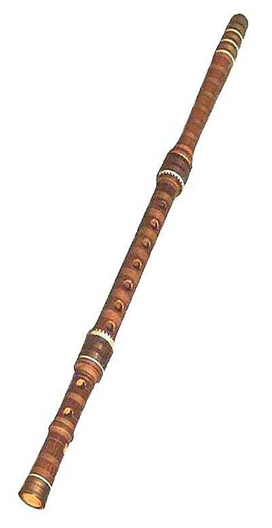mendoza hotel
hoteles mendoza
mendoza argentina
mendoza turismo
tour mendoza
flauta flute
flautas flutes
quena kena
siku zampoña
shakuchachi
flute headjoint
flutes baroque
world flutes
flute world
mendoza viajes
transporte mendoza
argentina hoteleria
excursión mendoza
aconcagua
bodegas mendocinas
bodega
malbec
vino mendoza
fista vendimia
caminos del vino
puente del inca
mendoza hotelMendoza (5507)
Argentina
hoteles mendoza
mendoza argentina
mendoza turismo
tour mendoza
flauta flute
flautas flutes
quena kena
siku zampoña
shakuchachi
flute headjoint
flutes baroque
world flutes
flute world
mendoza viajes
transporte mendoza
argentina hoteleria
excursión mendoza
aconcagua
bodegas mendocinas
bodega
malbec
vino mendoza
fista vendimia
caminos del vino
puente del inca
Mendoza (5507)
Argentina
hoteles mendoza
mendoza argentina
mendoza turismo
tour mendoza
flauta flute
flautas flutes
quena kena
siku zampoña
shakuchachi
flute headjoint
flutes baroque
world flutes
flute world
mendoza viajes
transporte mendoza
argentina hoteleria
excursión mendoza
aconcagua
bodegas mendocinas
bodega
malbec
vino mendoza
fista vendimia
caminos del vino
puente del inca
mendoza hotelMendoza (5507)
Argentina
hoteles mendoza
mendoza argentina
mendoza turismo
tour mendoza
flauta flute
flautas flutes
quena kena
siku zampoña
shakuchachi
flute headjoint
flutes baroque
world flutes
flute world
mendoza viajes
transporte mendoza
argentina hoteleria
excursión mendoza
aconcagua
bodegas mendocinas
bodega
malbec
vino mendoza
fista vendimia
caminos del vino
puente del inca
Mendoza (5507)
Argentina

World Flutes Festival

we take care
of our
environment
of our
environment
flute world, world flutes, quena, quenas, flauta, flute, saxophone, saxofon, latinamerican music, folklore, moseño, moceno, tarka, siku, zampoñas, andean, andina, andes, world flutes, flutes, bansuri, shakuhachi, winds, hotel mendoza, mendoza hoteles, mendoza alojamiento, hostal mendoza, hotel, pablo salcedo, kaval,
Flute flutes native american flute flauta quena shakuhachi bansuri flute world flauta flute flute flauta flutes miyazawa sankyo flute pear flutes muramatsu flute drelinger head joint world music festival
Love Silence
Peace
Amuki
Compassion
Peace
Amuki
Compassion
LOVE THE WORLD
FOUNDATION
FOUNDATION

NEW !! YOGA FLUTE MEDITATIONS
Kaval
The kaval [ka'val] is a chromatic end-blown flute traditionally played throughout Azerbaijan, Turkey, Bulgaria, Republic of Macedonia, Kosovo / Albania (Kavall), northern Greece (Kavali or Dzhamara), southern Romania (Caval), Armenia ( Blul) and Kurdistan (Blul). The kaval is primarily associated with mountain shepherds throughout the Balkans and Anatolia and in the book "KAVAL: Traditional Folk Melodies for Balkan & Anatolian Folk Flute", author Pat MacSwyney suggests that the kaval was spread throughout these regions by Yoruk nomads who inhabited the Pindus, Shar, Pirin, Rhodope mountains of the southern European Balkan peninsula and the Taurus mountains of southern Turkey.
Unlike the transverse flute, the kaval is fully open at both ends, and is played by blowing on the sharpened edge of one end. The kaval has 8 playing holes (7 in front and 1 in the back for thumb) and usually 4 "devil's holes" down near the bottom of the kaval. The devil's holes are supposed to improve tone and intonation. There is a Bulgarian folk tale in which the devil tries to out-play a shepherd in a musical dual. While the shepherd is sleeping, the devil drilled holes in the shepherds kaval but instead of ruining the kaval, this only served to enhance the shepherd's kaval playing thus thwarting the devil. While typically made of wood, kavals are also made from Arundo donax Linnaeus 1753 (Persian Reed), metal and plastic.
The kaval [ka'val] is a chromatic end-blown flute traditionally played throughout Azerbaijan, Turkey, Bulgaria, Republic of Macedonia, Kosovo / Albania (Kavall), northern Greece (Kavali or Dzhamara), southern Romania (Caval), Armenia ( Blul) and Kurdistan (Blul). The kaval is primarily associated with mountain shepherds throughout the Balkans and Anatolia and in the book "KAVAL: Traditional Folk Melodies for Balkan & Anatolian Folk Flute", author Pat MacSwyney suggests that the kaval was spread throughout these regions by Yoruk nomads who inhabited the Pindus, Shar, Pirin, Rhodope mountains of the southern European Balkan peninsula and the Taurus mountains of southern Turkey.
Unlike the transverse flute, the kaval is fully open at both ends, and is played by blowing on the sharpened edge of one end. The kaval has 8 playing holes (7 in front and 1 in the back for thumb) and usually 4 "devil's holes" down near the bottom of the kaval. The devil's holes are supposed to improve tone and intonation. There is a Bulgarian folk tale in which the devil tries to out-play a shepherd in a musical dual. While the shepherd is sleeping, the devil drilled holes in the shepherds kaval but instead of ruining the kaval, this only served to enhance the shepherd's kaval playing thus thwarting the devil. While typically made of wood, kavals are also made from Arundo donax Linnaeus 1753 (Persian Reed), metal and plastic.



